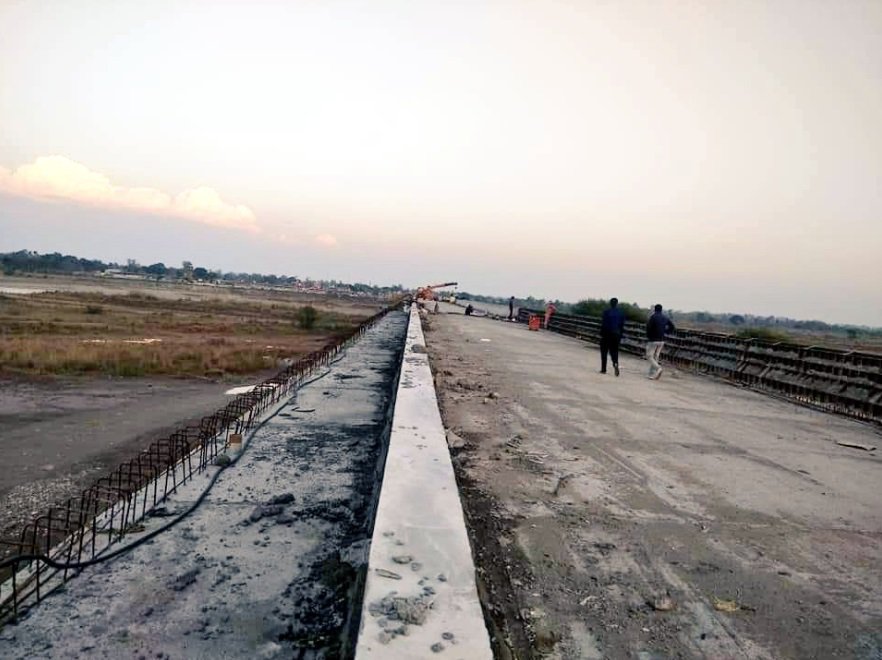The construction of a crucial double-lane, pre-stressed concrete bridge over the Ujh River, near Jathana and Jakhol villages in Kathua district, has been abandoned for over two and a half years due to disputes between the Jammu and Kashmir Projects Construction Corporation and the contractor. This has exacerbated the difficulties faced by more than 10,000 people from three panchayats in the Barnoti block.
The significant delay in completing the bridge project has undoubtedly resulted in hardships for the affected villages and communities, hindering the daily lives and activities of the residents and leading to several difficulties as the affected villages and communities are unable to enjoy proper connectivity to essential services, educational institutions, healthcare facilities, and economic opportunities. This lack of connectivity has severely impacted the overall development and quality of life for the residents. During floods or adverse weather conditions, crossing the river becomes risky and potentially life-threatening for the residents. The absence of a fully functional bridge forces them to resort to dangerous alternatives, such as makeshift arrangements or relying on fragile structures, which significantly increases the risk of accidents and casualties. Students residing in the affected villages are the worst sufferers, as they face daily hardships while commuting to schools and colleges and even have to endanger their lives on rainy days. Inadequate access to healthcare facilities due to the incomplete bridge is having severe implications for the health and well-being of the residents.
The prolonged delay in completing the bridge project, spanning over eight years, is indeed a cause for concern. It is understandable that the locals feel frustrated and that their trust in the authorities may have been compromised. The lengthy duration of the project raises questions about the effectiveness of project management, decision-making processes, and the ability to meet project timelines.
Because of all these, it becomes essential to conduct a detailed investigation to determine the specific actions or oversights on the part of the officials involved. If there were faults in the Detailed Project Report or site selection, it would be necessary to conduct a thorough investigation. This investigation should include a review of the project planning documents, evaluation reports, and any other relevant records to identify any errors, oversights, or lapses in the decision-making process. Accountability for faulty DPR or site selection would typically involve identifying the individuals or teams responsible for preparing and approving the project plans. These individuals would need to be held accountable for any negligence or professional misconduct that may have contributed to the design and site changes, as well as the subsequent delays and financial implications.
The apparent lack of sincerity and commitment by officials in completing the bridge project, despite the repeated insistence on adhering to timelines by the administration, is indeed a cause for concern.
To prevent such situations from recurring, it is important to implement robust project management practises, ensure proper oversight and monitoring, and establish clear guidelines and accountability mechanisms for infrastructure projects. This will help ensure that projects are completed within stipulated timelines and that officials are held responsible for any lapses or delays that occur.
Trending Now
E-Paper


